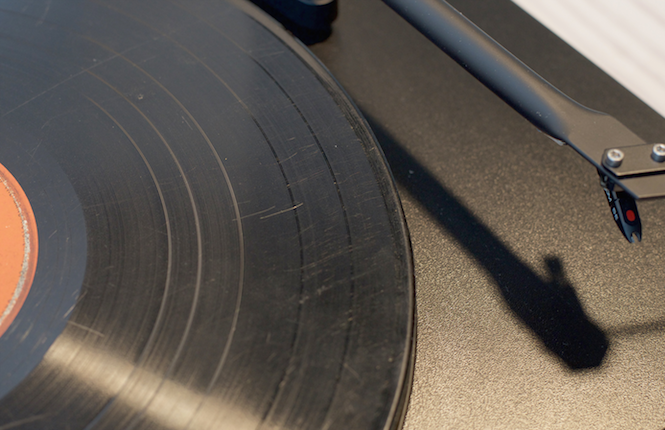Discogs uses an eight level grading scheme to give buyers an idea of how the record looks and sounds before they buy. The terminology they use does not match up to the way the words are normally used. For example, a “Good” record can have “significant surface noise, scratches, and visible groove wear.” If it does, it’s not really all that good, is it? Ideally the meaning of a grade would map to the usual sense of the word.
The Discogs scheme is based on the Goldmine Grading Guide, which dates back to the days of shellac records, where “Good” meant “the spikes we use for needles haven’t cut all the way through the record yet.” While the Goldmine grading scheme is imperfect, it has been in use for a LONG time, and anything I have to say is unlikely to foment change. Still, if it were up to me, here is how I would grade records.
Sealed: The record could be perfect (see “Excellent” below), it could be a mess. Since it’s sealed, the seller can’t claim to know. Any visible defects to the outer sleeve should be noted by the seller.
Excellent: Perfect, or as close as anything gets in our imperfect world. No audible noise. No visible marks. Very few records are “Excellent”. Brand-new, unsealed but unplayed records can be graded as Excellent if there are no visible defects.
Very Good: Little, if any, audible noise while the music is playing. No loud pops or other noises. May have minor audible noise between songs. There may be some visible surface marks, but no deep scratches, etc…. Nothing a normal human would complain about, but still less than “Excellent”.
Good: Some, but not a lot, of audible noise while the music is playing. Non-audiophiles might think the disc is “Very Good”, but discerning listeners will notice that it has been played enough to show wear.
OK: Plays through without skipping (and without putting a quarter on the tonearm), though there is noticeable audible noise throughout the record.
Poor: Any record that skips or has enough surface noise to drown out the music, but can still be played.
Bad: Cracked, broken, or otherwise unplayable
In this system, modifiers (+ or -) are not official grades, but subjective modifiers that can be used with some of the grades to indicate where the disk falls within the range.
Modifiers make no sense for the top and bottom grades. An “Excellent” record has no known defects – it cannot be better than that, and if it has some issue that might make it “Excellent-” then it’s not really Excellent, is it? And does anyone really care if a Bad record is slightly more (or less) Bad than others?
But there’s room of argument with the other grades, so if you think a record falls near the top end of a range, give it a ‘+’ (or conversely, a ‘-‘). And if you want to call a record VG+++++, go nuts.
A similar system could be set up to rate album covers and CDs. I’ll leave that as an exercise for the student.
How is this better than the existing Goldmine Grading Guide?
- The names of the grades map closer to the real world uses of the respective words, making them easier to understand.
- Sealed records, an objective fact in a subjective system, are called out separately.
- The mythical “Mint” grade is discarded.
- Excellent, Poor, and Bad are still subjective, but somewhat less so than the similar grades in the Goldmine system.
- Slightly fewer grades make for broader categories, making it easier to accurately fit a record in a specific category.
- Modifiers are separated from grades, increasing the clarity of their use.
Are the improvements enough to get anyone to change the way things are currently done? Don’t be silly. But if nothing else, I would feel better if I could call the bad, noisy records in my collection something other than “Good”.

